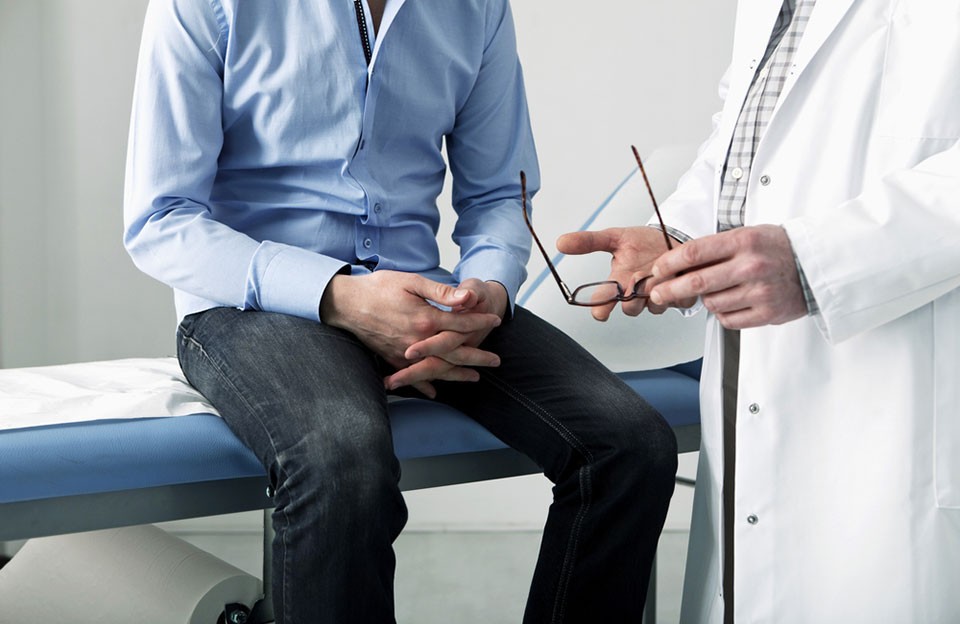April is Testicular Cancer Awareness Month. Although testicular cancer is uncommon, it is still a men’s health concern. Approximately 1 in every 250 men will develop it during their lifetime. The American Cancer Society estimates that fewer than 10,000 new cases will be diagnosed and about 450 people will die from testicular cancer in the United States this year.
Testicular cancer is mostly found in young and middle-aged men. The average age at diagnosis is 33. Six percent of cases are diagnosed in those younger than 18, and eight percent are diagnosed in those older than 55.
Risk Factors for Testicular Cancer
A risk factor is anything that affects your chances of getting a disease. Different diseases have different risk factors. Some risk factors can be changed, like diet or exercise. Some risk factors, like age or family medical history, can’t be changed. Having one or more of these risk factors does not guarantee that you will develop testicular cancer. Most people who develop testicular cancer don’t have any risk factors. You are more at risk of having testicular cancer if you:
- Have a family history of testicular cancer
- Have an undescended testicle
- Have had testicular cancer before
- Have HIV/AIDS
- Are between 20 and 34
- Are white or American Indian
- Are tall
You are not more at risk if you:
- Have prior injury or trauma to the testicles
- Participate in strenuous physical activity
Many men with testicular cancer have no risk factors. It’s not possible to prevent most cases of testicular cancer.
Signs and Symptoms of Testicular Cancer
Many symptoms associated with testicular cancer are more likely to be caused by something else, like testicle injury or inflammation. Either can have symptoms that are similar to testicular cancer. Some men with testicular cancer are asymptomatic. The cancer is found during testing for other conditions. If you have any of these signs or symptoms, see your doctor.
- Lump or swelling in the testicle
- Breast growth or soreness
- Early puberty in boys
Even if testicular cancer has advanced and metastasized, or spread to other parts of the body, many men may not have symptoms right away. Some may have some of these signs or symptoms.
- Low back pain
- Shortness of breath
- Chest pain
- A cough
- Belly pain
- Headaches
- Confusion
How to Do a Testicular Self-Exam
Finding cancer before it has metastasized allows for more treatment options. Not all early cancers have noticeable signs and symptoms. Most testicular cancers can be found early. The first symptoms are often a lump on the testicle or a testicle that is swollen or larger than normal.
An effective way to find early signs and symptoms of testicular cancer is to do a monthly self-exam. A monthly self-exam is advised, especially for those who have risk factors that increase their chances of developing testicular cancer. The best time for a self-exam is after a shower or bath when the skin of the scrotum is relaxed. Here are the steps.
- First, hold your penis out of the way and examine your testicles. Visually check for abnormalities, like swelling or bumps. Make sure that each of your testicles is about the same size. It is normal for one testicle to be slightly larger or hang lower than the other.
- Next, hold one of your testicles between your thumb and fingers. Look and feel for any lumps, masses, or changes in the size, shape, or consistency of your testicles. Check your epididymis along the top and back of your testicle. It may feel bumpier than your testicle. Check the vas deferens that goes up from the epididymis. It should feel smooth.
- Finally, repeat the exam on your other testicle.
Knowing how all of these parts feel normally will help you find anything unusual. Report any changes to your doctor immediately.
More info: Read more about Testicular Cancer at Comprehensive Urologic Care

